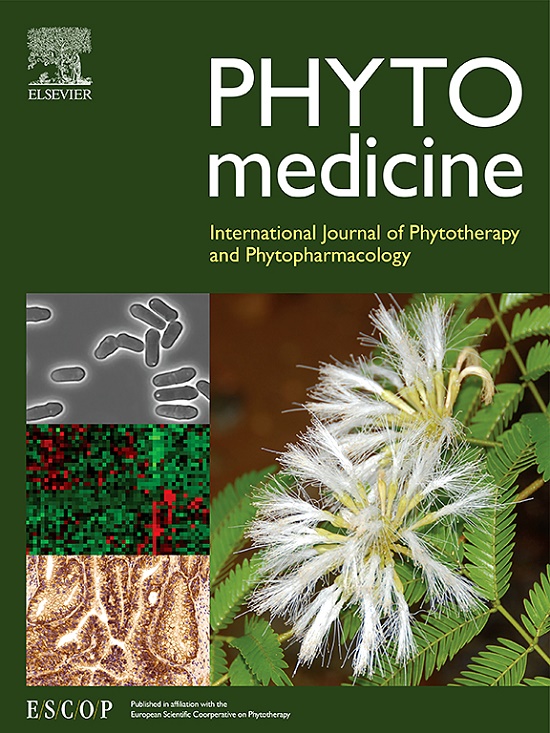Shuxuening injection improves myocardial injury after myocardial infarction by regulating macrophage polarization via the TLR4/NF-κB and PI3K/Akt signaling pathways
IF 6.7
1区 医学
Q1 CHEMISTRY, MEDICINAL
引用次数: 0
Abstract
Background
Macrophage activation and polarization play pivotal roles in the inflammatory response and myocardial injury associated with myocardial infarction (MI). Modulating macrophage polarization from the pro-inflammatory M1 phenotype to the anti-inflammatory M2 phenotype is a promising therapeutic approach for MI. Shuxuening injection (SXNI) is extensively utilized in clinical settings for MI treatment and has demonstrated therapeutic efficacy. However, the effects of SXNI on macrophage polarization post-MI and its underlying mechanisms remain insufficiently understood.
Aim of the study
This study is aimed to evaluate the effects of SXNI on macrophage polarization following MI and to elucidate its potential mechanisms of action.
Methods
A rat model of MI was established by ligation of the left anterior descending coronary artery. The cardioprotective effects of SXNI were assessed through echocardiography, TTC staining, Masson's trichrome staining, HE staining, TUNEL staining, and western blotting (WB). Macrophage polarization was evaluated using ELISA, immunofluorescence staining, and WB. An in vitro model of oxygen-glucose deprivation (OGD) was utilized to simulate MI in macrophages, and qRT-PCR was employed to examine M1/M2 polarization markers. UPLC-Q-TOF/MS was used to identify active components in SXNI. Network pharmacology analysis and molecular docking were utilized to predict the key targets and pathways, which were subsequently validated through WB and immunohistochemistry.
Results
SXNI improved cardiac function, reduced infarct size, and attenuated myocardial tissue damage and apoptosis in MI rats. Staining analyses indicated a reduction in M1 macrophages (CD86+/CD68+) and an increase in M2 macrophages (CD206+/CD68+) in SXNI-treated animals. In vivo and in vitro experiments demonstrated that SXNI decreased M1 markers and pro-inflammatory cytokines levels while increasing M2 markers and the production of anti-inflammatory and pro-angiogenic cytokines. UPLC-Q-TOF/MS analysis identified 18 active components in SXNI. Network pharmacology analysis and molecular docking implicated the TLR4/NF-κB and PI3K/Akt pathways as central mechanisms, which were further confirmed by WB and immunohistochemistry. SXNI inhibited the expression of TLR4 and phosphorylated NF-κB while enhancing phosphorylated PI3 K and Akt levels.
Conclusions
SXNI modulates the TLR4/NF-κB and PI3K/Akt signaling pathways to promote the polarization of macrophages from the M1 to the M2 phenotype, thereby alleviating myocardial inflammation and injury. These findings provide a scientific basis for the clinical application of SXNI in MI management, and establish a scientific foundation for exploring novel therapeutic strategies for cardiovascular diseases based on macrophage polarization.

求助全文
约1分钟内获得全文
求助全文
来源期刊

Phytomedicine
医学-药学
CiteScore
10.30
自引率
5.10%
发文量
670
审稿时长
91 days
期刊介绍:
Phytomedicine is a therapy-oriented journal that publishes innovative studies on the efficacy, safety, quality, and mechanisms of action of specified plant extracts, phytopharmaceuticals, and their isolated constituents. This includes clinical, pharmacological, pharmacokinetic, and toxicological studies of herbal medicinal products, preparations, and purified compounds with defined and consistent quality, ensuring reproducible pharmacological activity. Founded in 1994, Phytomedicine aims to focus and stimulate research in this field and establish internationally accepted scientific standards for pharmacological studies, proof of clinical efficacy, and safety of phytomedicines.
 求助内容:
求助内容: 应助结果提醒方式:
应助结果提醒方式:


